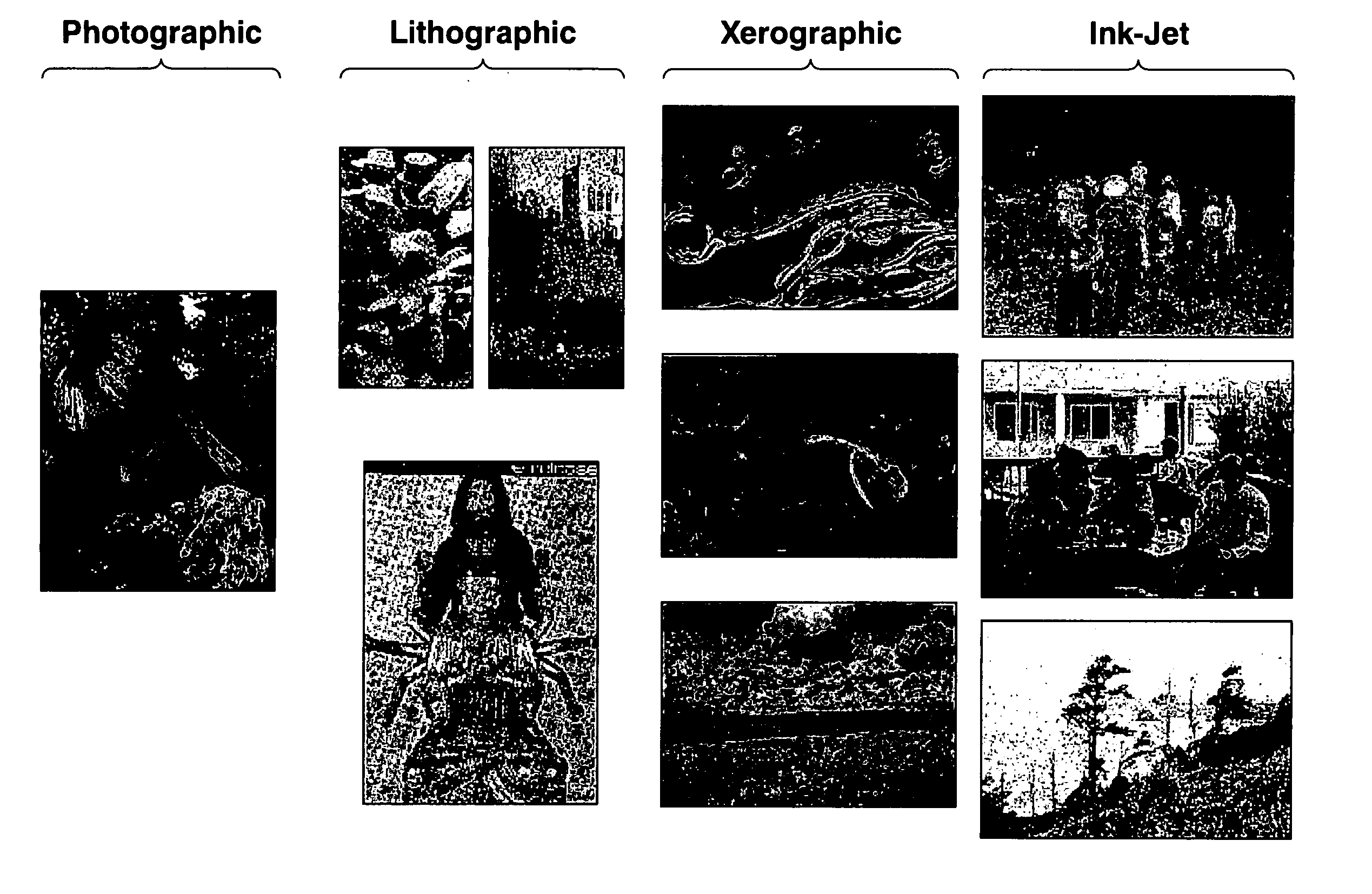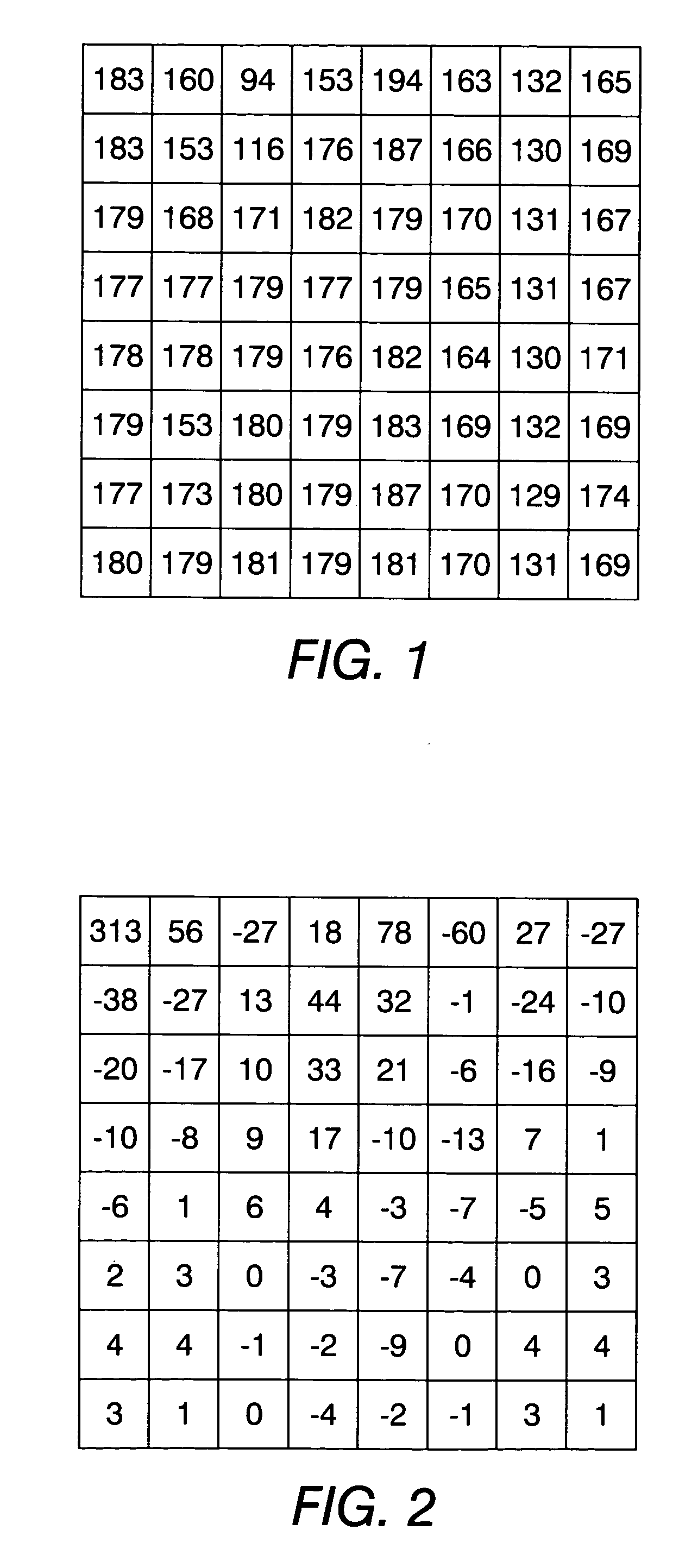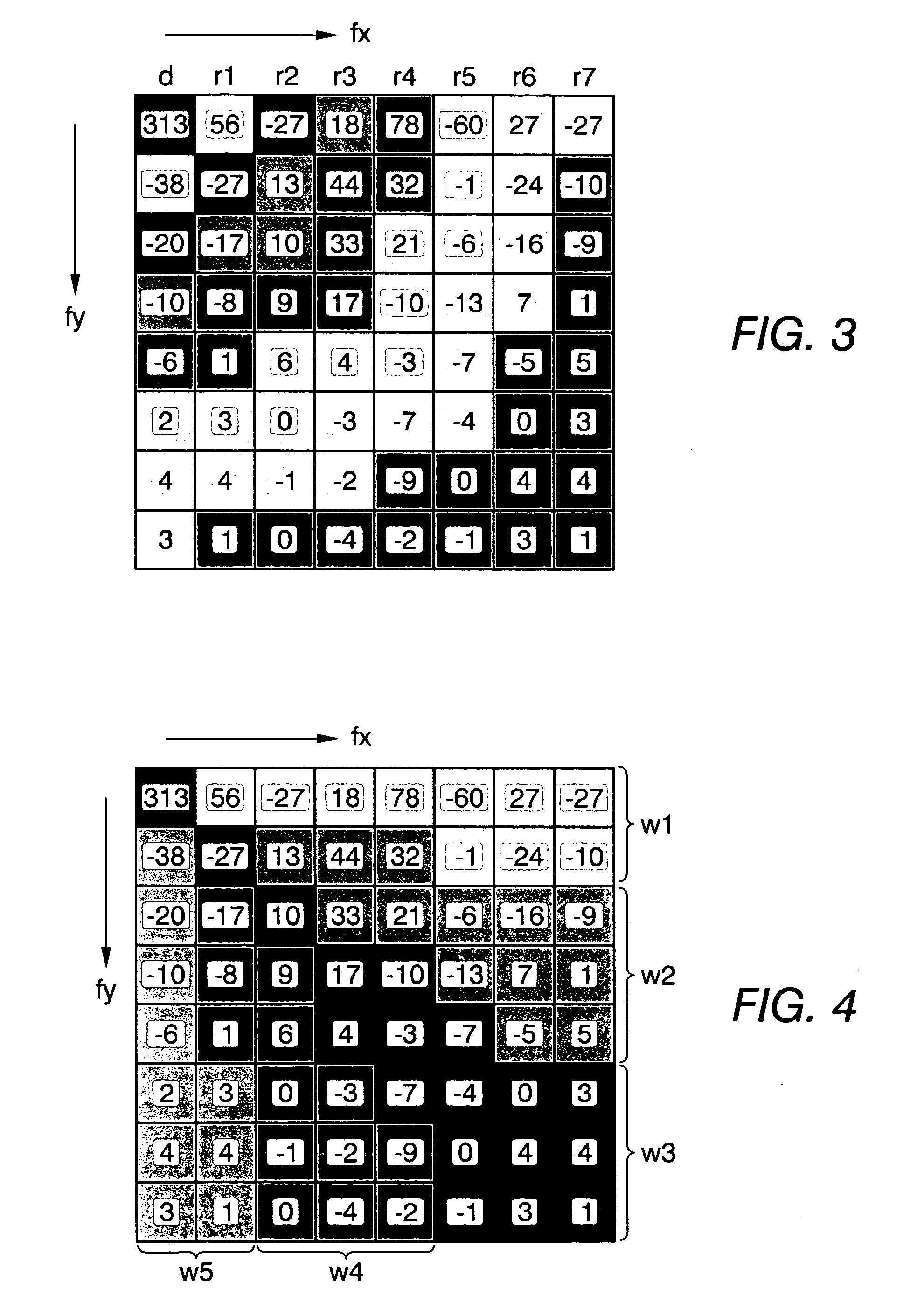Method and system for classifying scanned-media
a technology of scanned media and method, applied in the field of method and system for classifying scanned media, can solve the problems of inability to easily expect novice users to identify the input medium, significant color errors may be obtained, and cumbersome process
- Summary
- Abstract
- Description
- Claims
- Application Information
AI Technical Summary
Benefits of technology
Problems solved by technology
Method used
Image
Examples
Embodiment Construction
[0022] A method for determining the printing technology used in producing a document analyzes the image through the Discrete Cosine Transform (DCT). (Details for the transform and its motivation may be found, for instance, in Orthogonal Transforms for Digital Signal Processing, by N. Ahmed and K. R. Rao). The following description is based on standard JPEG compressed data using 8 by 8 pixel blocks, but an extension to any base size (e.g., a pixel block of size n by n) or larger base sizes, e.g., 16 by 16 blocks is straightforward.
[0023] JPEG is the image compression standard developed by the Joint Photographic Experts Group. JPEG compression compresses gray scale images as well as color images. JPEG can compress the red-green-blue components of a color image as three separate gray scale images. The JPEG process divides an input image into 8 by 8 pixel blocks and then computes the discrete cosine transform (DCT) of each block (this results in a matrix of 64 coefficients). A quantize...
PUM
 Login to View More
Login to View More Abstract
Description
Claims
Application Information
 Login to View More
Login to View More - R&D
- Intellectual Property
- Life Sciences
- Materials
- Tech Scout
- Unparalleled Data Quality
- Higher Quality Content
- 60% Fewer Hallucinations
Browse by: Latest US Patents, China's latest patents, Technical Efficacy Thesaurus, Application Domain, Technology Topic, Popular Technical Reports.
© 2025 PatSnap. All rights reserved.Legal|Privacy policy|Modern Slavery Act Transparency Statement|Sitemap|About US| Contact US: help@patsnap.com



